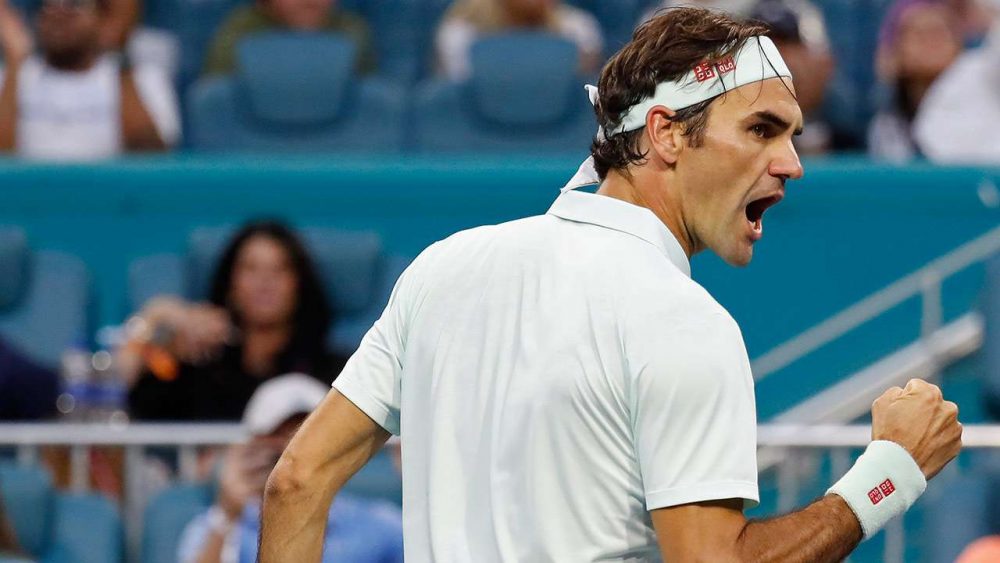From 128 players to 8, the quarterfinals of Roland Garros 2019 are upon us.
Two fields with markedly different makeups, where the men’s is defined by its familiar faces, the women’s is defined by its new ones. Seven of the eight men have reached this stage before; among the women, three.
So whether you like seeing the game’s elite or a fresh new fairytale, RG 19 has definitely got you covered. Enjoy the matches, and read on for a look at all the quarterfinal action on Tuesday in Paris.
Matches start at 2:00pm local time.
Sloane Stephens (USA) [7] v Johanna Konta (GBR) [26] – First on Philippe Chatrier
One of the more remarkable storylines in a season full of them, Jo Konta’s clay court rebirth has seen the Briton go from treating Roland Garros like a Wimbledon warmup to a tournament she can actually win, and she certainly has to be given a chance – assuming she can get past Sloane Stephens, that is. Rounding into form at the perfect time, Stephens comes in having just comfortably dispatched Garbine Muguruza in the round of 16, and she’ll need to play similarly well against Konta, given the latter has won both their career meetings (both in 2019), including a 6-7, 6-4, 6-1 affair a few weeks ago in Rome. Here in Paris things should be similarly topsy-turvy, with both women trading the momentum, depending on whether Stephens is able to unseat Konta from the baseline, or Konta is able to take the extra bounce of the American’s ball and hit through the court – either way, it’s likely to be three sets.
Stan Wawrinka (SUI) [24] v Roger Federer (SUI) [3] – First on Suzanne Lenglen
It was a long road that culminated with a five hour, five-set epic with Stefanos Tsitsipas, but Stan Wawrinka is back in a grand slam quarterfinal… and now he gets Roger Federer. Where Wawrinka has been immensely tested in back-to-back matches with Grigor Dimitrov and Tsitsipas, Federer has been able to breeze past a quartet of the ATP’s lesser lights, and considering the latter has a 22-3 advantage in the head-to-head, it’s safe to say he comes in the favourite. Of course, we can’t discount Wawrinka going bonkers as he did in 2015 here to upend his compatriot 6-4, 6-3, 7-6, but at this point he might not have enough left in the tank to muster such a performance, to say nothing of a very ominous looking Federer. Here’s hoping we can get another titanic encounter, but realistically, this is the Swiss Maestro’s match to lose.
Marketa Vondrousova (CZE) v Petra Martic (CRO) [31] – Second on Suzanne Lenglen
If you wanted to sum-up the 2019 WTA season in one encounter – and that’s a weird thing to want, but let’s play along – you could hardly do better than Marketa Vondrousova and Petra Martic meeting in a grand slam quarterfinal. Currently at career highs of 38 and 28 respectively, 19-year-old Vondrousova and 28-year-old Martic have both been very impressive in 2019, and while they may not be household names, we’ve already seen in the final of Istanbul this year that they can play some entertaining tennis worthy of even the most casual fan’s attention. Like that match in Istanbul, expect this one to be a very even affair, with a fascinating contrast between Vondrousova’s combined use of depth and liberally applied drop shots, and Martic’s more adventurous directional hitting.
Rafael Nadal (ESP) [2] v Kei Nishikori (JPN) [7] – Second on Philippe Chatrier
As if playing Rafael Nadal at Roland Garros wasn’t hard enough already, poor Kei Nishikori comes in on short rest having just played his second straight five-setter. Making matters worse, Nadal has a 10-2 head-to-head advantage over Nishikori, so it’s fair to say the Japanese comes into this one a heavy underdog. Realistically – and to be fair, it’s a more realistic possibility than in recent years – Nishikori’s only hope is that Nadal’s physical frailties start to catch up with him, in which case the Japanese’s all-round solidity would allow him to take full advantage. Unfortunately, it’s far more likely Nishikori is the one of the ailing body, and even if he’s healthy, on this court, Nadal won’t let him stay close enough to the baseline to make a significant impact.
















